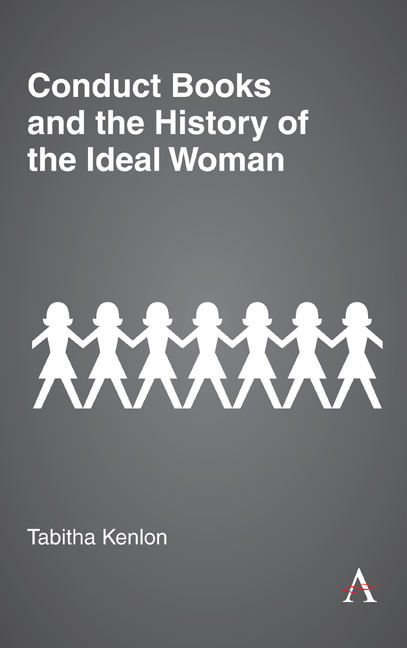Book contents
- Frontmatter
- Contents
- Acknowledgments
- Explanatory Note
- Introduction: Woman as She Should Be
- 1 A Good Woman Is a Godly Woman, Obviously
- 2 Conduct for Those Who Are Not Queen
- 3 Look but Don’t Talk: Reflections of the Ideal
- 4 Playing the Part as Nature Intended
- 5 Victoria’s Angels
- 6 Suffrage, Little Wives and Career Girls
- 7 Feminism Changes Everything, Right? Right??
- Coda: An Ideal End
- References
- Index
2 - Conduct for Those Who Are Not Queen
Published online by Cambridge University Press: 30 April 2020
- Frontmatter
- Contents
- Acknowledgments
- Explanatory Note
- Introduction: Woman as She Should Be
- 1 A Good Woman Is a Godly Woman, Obviously
- 2 Conduct for Those Who Are Not Queen
- 3 Look but Don’t Talk: Reflections of the Ideal
- 4 Playing the Part as Nature Intended
- 5 Victoria’s Angels
- 6 Suffrage, Little Wives and Career Girls
- 7 Feminism Changes Everything, Right? Right??
- Coda: An Ideal End
- References
- Index
Summary
The Trouble with Queens
A conduct manual written for a sixteenth- century English queen would be shorter than the titles of many books: Give birth to a healthy son. Although she was generally expected to provide a good role model for her subjects, a queen's most important function was the preservation and extension of the royal dynasty. By that measure, there were no successful female monarchs for more than a hundred years; Jane Seymour, Henry VIII's third wife, who supplied the kingdom with Edward VI (and died nine days later), was never officially crowned queen. Five of Henry's six wives were therefore a disap-pointment, as were his two daughters, Mary and Elizabeth, neither of whom bothered to leave an heir to the throne.
Although women ruled only in the second half of the century (Mary from 1553 to 1558 and Elizabeth from 1558 to 1603), Henry VIII's numerous wives are an undeniable presence in the first half. Whether they were paragons of good behavior like the devout Catherine of Aragon or doomed young flirts like Catherine Howard, their lives and deaths are vivid reminders of the limits of women's power. Dutiful Catherine of Aragon was cruelly divorced by Henry when her childbearing years ended, and her daughter Mary was declared illegitimate. Anne Boleyn and Catherine Howard were accused of adultery and beheaded. The rewards for behaving properly were small, but the punishment for transgression was severe. The position of queen, though, is naturally paradoxical, and the century was filled with paradoxes. Conduct manuals written early in the century and still read and discussed decades later recommend limited public exposure for women and few conversations with men. The most important skill for women, at court or running an ordinary household, was knowing when to conform and when to rebel.
Queen Elizabeth, who gave her name to an age, defied expectations from the start. She was supposed to be a boy— why had Henry gone to the trouble of divorcing Catherine of Aragon, breaking with the Catholic Church and marrying Anne Boleyn if all he got for his pains was another daughter? He declared her illegitimate after the execution of her mother, and Elizabeth had to wait for Henry and his three successors to die before acceding to the throne. During her record- breaking 44- year reign, she supervised an era of explor¬ation and empire.
- Type
- Chapter
- Information
- Conduct Books and the History of the Ideal Woman , pp. 37 - 60Publisher: Anthem PressPrint publication year: 2020



